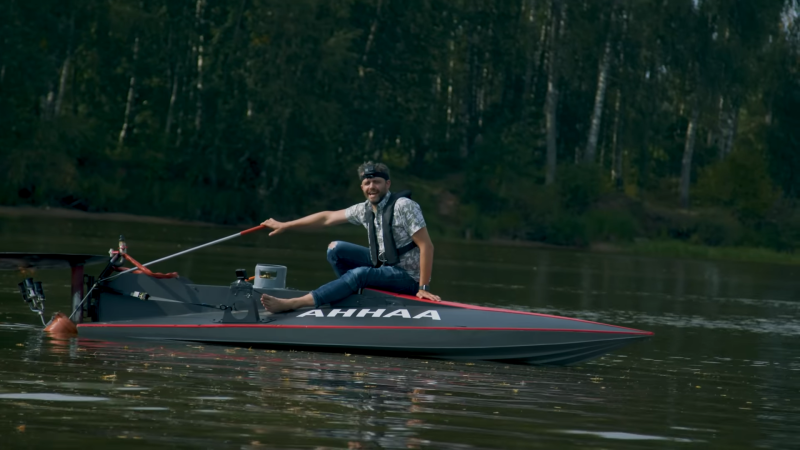Pop-pop boats are a neat little science teaching tool that many children end up playing with at some point or other. They’re normally sized to float around a sink or bathtub. [Steve Mould] recently got the opportunity to board a much larger example, sized for an actual human passenger.
The boat belongs to the The AHHAA Science Center in Estonia, along with a smaller model about half the size. Both are fired by propane gas burners to give them some real heat output into the water tank, far beyond what you’d get from little tea light candles. In the case of the larger boat, it uses a series of valves to allow the tank to be filled with water while the rear thrust pipes are closed.
At the larger scale, it’s more easy to visualize the flow out of the boat’s rear outlets. It’s by no means a fast way to get around on the water, with a top speed somewhat less than walking pace. It’s also very loud. Regardless, it’s amusing to see the pop-pop engine work even when scaled up to full size.
If you’re looking for an in-depth explanation of how pop-pop boats work, [Steve Mould] has covered that previously. Video after the break.

















now, a poop poop boat would be really amazing.
You get a poop poop boat every time there’s an outbreak of norovirus on a cruise ship.
Just use dried manure for fuel.
IIRC, Hackaday had an article about a type of valve used on steam locomotives that ,are it possible for water (at low pressure) to be injected into the higher pressure of the boiler. Something like that might allow the boat in this article to run without having to depressurize the boiler to add more water.
That boat expells water, not steam… meaning you’d need to inject the same amound of water in the boiler as you expell… meaning that if you inject that at high enough pressure, you might get rid of the boiler and just directly expell this water… so no use…
What might be interesting through is a one way valve to refill the boiler with water aspired from the front or something similar…
The waste heat is a HUGE problem, and that waste heat is all inefficient design.
A design which more directly translates that heat into output (horsepower or whatever we’d call it) would be impressive. It would be safer and more powerful.
And it would fail to meet the goal, which was specifically to demonstrate the mechanism of action behind the toy pop-pop boat.
It would be a better machine, and yet a worse demonstrator :)